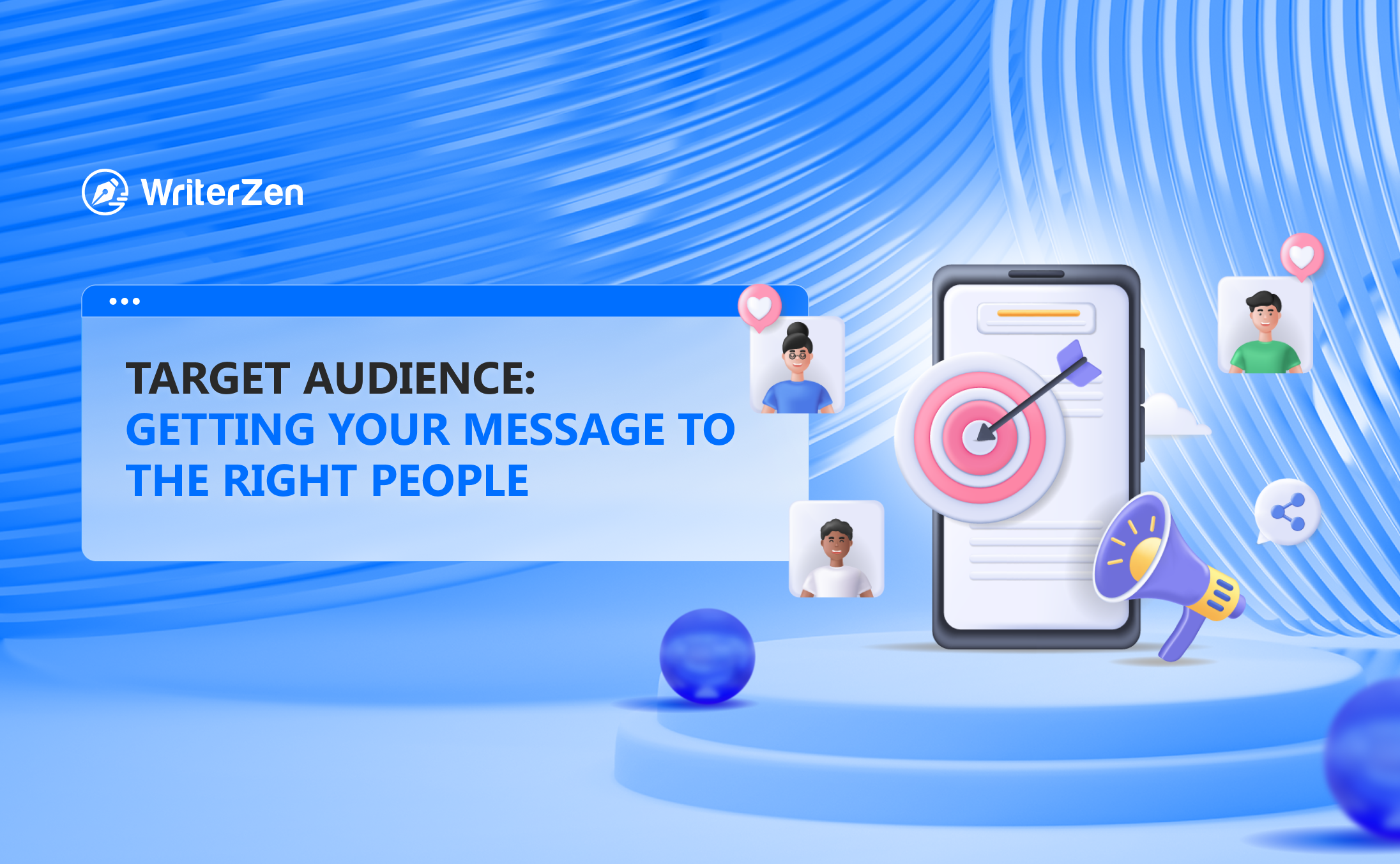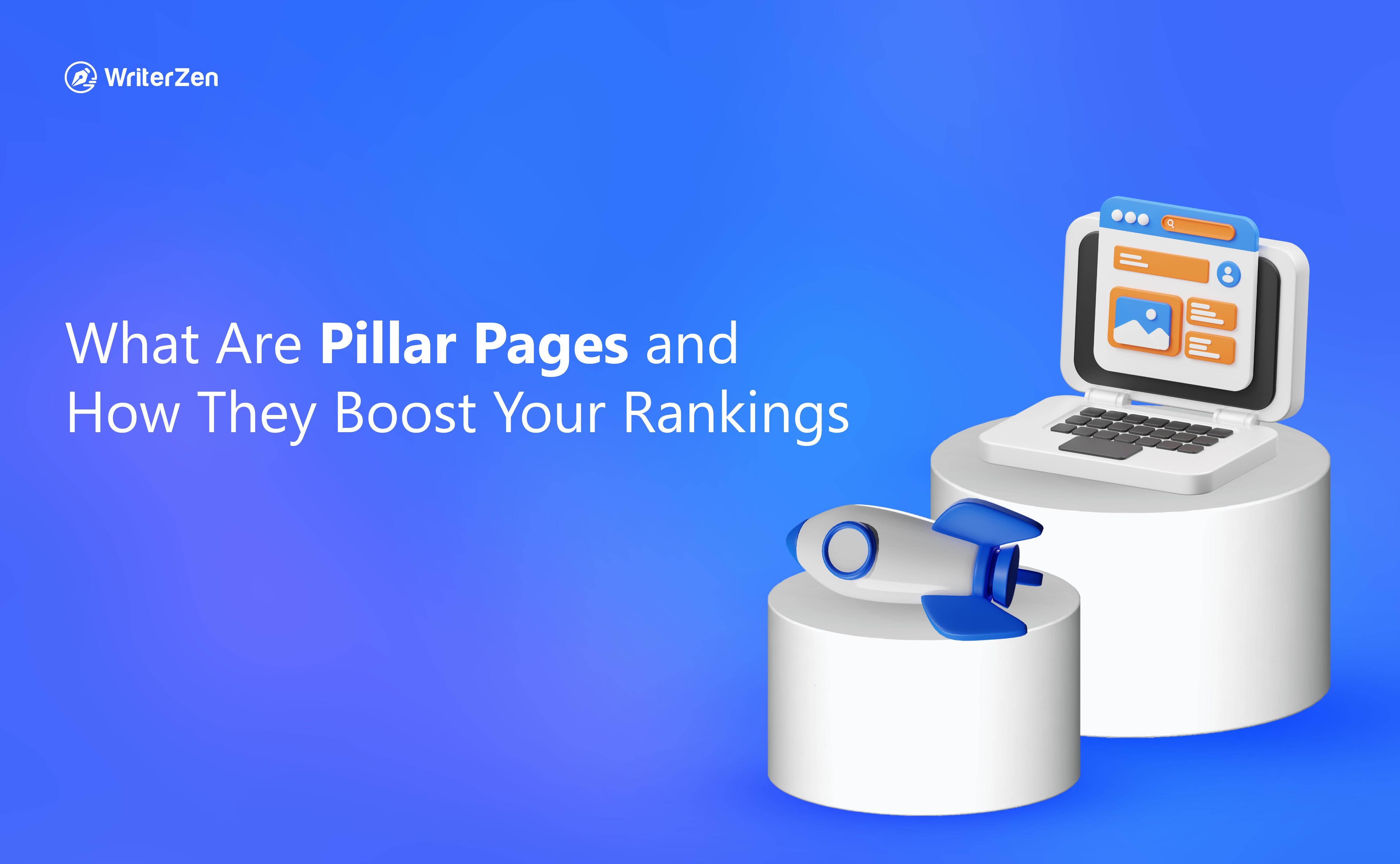Knowing your target audience is crucial to any effective digital marketing strategy, and when correctly researched and targeted, it will help ensure that your marketing efforts are successful.
In this article, we will explore the definition of a target audience, highlight the numerous benefits of understanding your audience, discuss different types of target audiences, reveal effective methods to determine your target audience, and provide insights into reaching them.
Definition of Target Audience
A target audience refers to a specific group of individuals a business or marketer aims to reach with their products, services, or messages. These groups share common characteristics, interests, demographics, and behaviors, making them more likely to respond positively to marketing that appeals directly to them.
Understanding your target audience allows you to tailor your marketing strategies to suit their preferences, needs, and aspirations, resulting in more effective and impactful campaigns.
Benefits of Knowing Your Target Audience
Knowing your target audience offers many advantages that can drive the success of your digital marketing endeavors. By investing time and effort into researching and understanding your audience, you can:
-
Accurate Marketing: Tailoring your messages, content, and offers to resonate with your target audience ensures that your marketing efforts reach the right people at the right time, increasing the likelihood of conversions and sales.
-
Better Customer Engagement: Understanding your audience enables you to communicate in their language, address their pain points, and deliver value that resonates with them, resulting in higher engagement, brand loyalty, and customer satisfaction.
-
Save Costs: By focusing your marketing budget on the segments of your target audience most likely to convert, you can optimize your spending and maximize your return on investment.
-
Get a Competitive Edge: Deep knowledge of your target audience allows you to differentiate yourself from competitors by offering personalized experiences, tailored solutions, and targeted marketing campaigns.
Types of Target Audiences
You can categorize target audiences into segments based on demographics, psychographics, behavior, interests, purchase intent, culture, subculture, and location. Understanding these segments can help you refine your marketing strategies and connect with your audience on a deeper level.
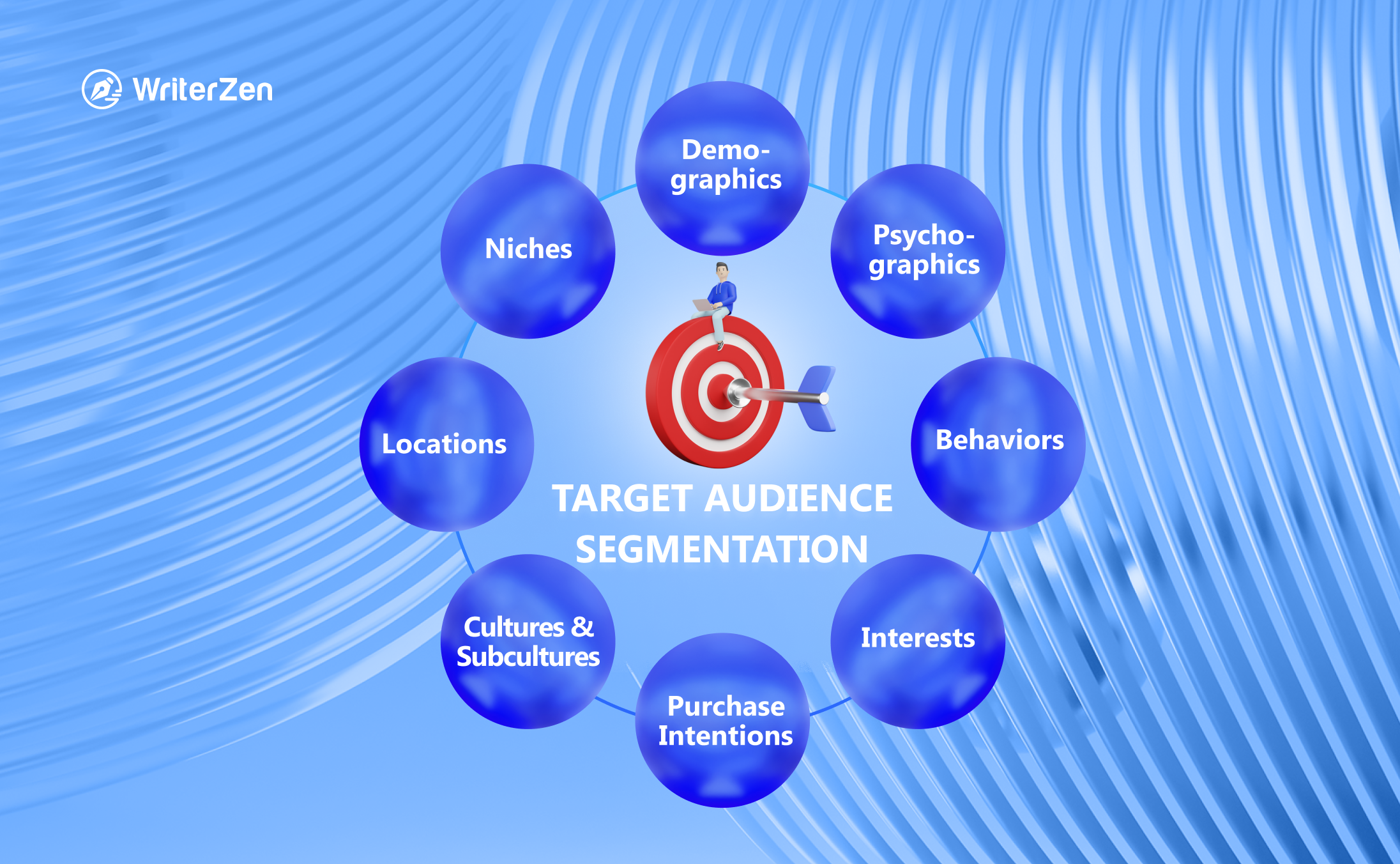
Demographics
Consider factors like age, gender, income, education level, occupation, and geographic location. For instance, a skincare brand might target women aged 25-40 residing in urban areas.
Psychographics
Focuses on individuals' attitudes, beliefs, values, interests, and lifestyle choices. For example, a yoga studio might target health-conscious individuals who value holistic wellness and sustainability.
Behaviors
It examines consumers' purchasing behaviors, brand loyalty, and product usage. An online bookstore may target frequent readers with a history of purchasing books online.
Interests
This type of target audience focuses on individuals who share common interests, hobbies, or passions. For example, a sports equipment brand might target fitness enthusiasts, outdoor adventurers, or specific sports enthusiasts like basketball players or cyclists.
Purchase Intentions
These are individuals who have demonstrated a high likelihood of making a purchase. It can be based on recent online browsing behavior, abandoned shopping carts, or previous purchases.
Targeting individuals with a high intent to purchase allows you to focus your marketing efforts on those most likely to convert into customers.
Cultures and Subcultures
Cultural and subcultural targeting considers specific groups' values, beliefs, and traditions.
Examples of these groups can include targeting ethnic or religious communities, subcultures like gamers or music enthusiasts, or communities with shared beliefs or ideologies.
Understanding these segments' cultural nuances and preferences can help you create tailored marketing campaigns that resonate deeply with them.
Locations
Location targeting allows you to focus on specific geographical areas, such as countries, regions, cities, or neighborhoods. Location targeting is beneficial for businesses with physical stores or local service providers.
For example, a restaurant may target individuals living or working within a specific radius to drive foot traffic and increase local awareness.
Niches
In addition to the broad target audience segments mentioned above, niche audiences can provide highly specific and focused targeting opportunities.
By understanding and catering to their unique interests, preferences, and needs, you can deliver relevant messages, reduce competition, increase brand loyalty, achieve higher conversion rates, and uncover opportunities for innovation.
Niche audiences appreciate specialized solutions and develop strong brand loyalty, making them valuable for long-term relationships and word-of-mouth promotion. By focusing on niche segments, you can position your brand as a trusted authority and gain a competitive advantage within a specific market segment.
Ways to Determine Your Target Audience
Identifying and understanding your target audience requires a strategic approach. Here are effective methods to determine your target audience:
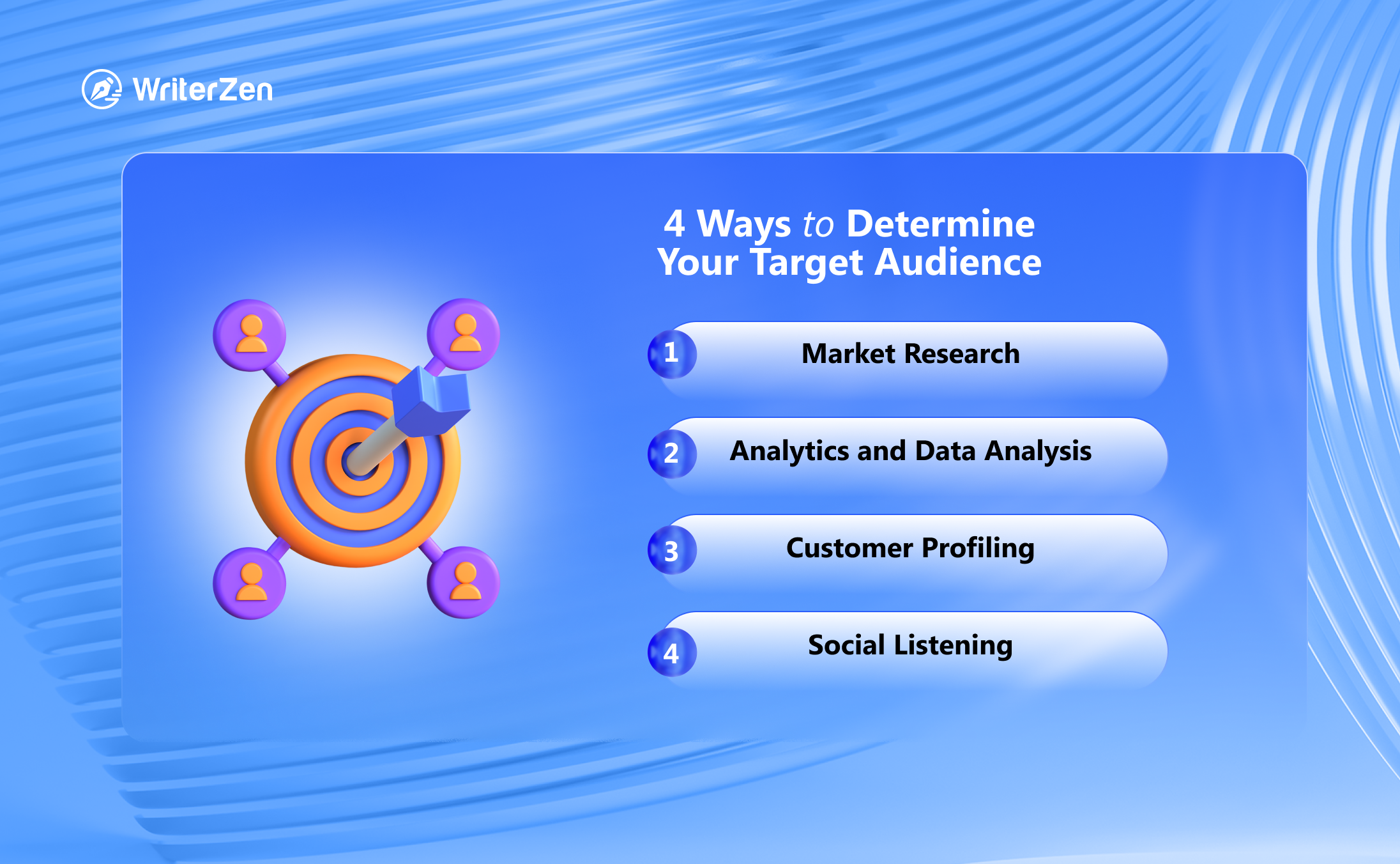
Market Research
Conduct comprehensive market research to gather data on demographics, consumer behavior, market trends, and competitors. Surveys, interviews, and focus groups can provide valuable insights into your target audience's preferences, needs, and pain points.
Analytics and Data Analysis
Leverage data analytics tools to gather information about your website visitors, social media followers, and email subscribers. Analyze metrics such as age, gender, location, and engagement levels to identify patterns and trends.
Customer Profiling
Create detailed customer profiles or buyer personas that represent your target audience segments. Include demographic information, interests, motivations, challenges, and goals to understand their needs and preferences better.
Social Listening
Monitor social media platforms, online forums, and review sites to better understand your target audience's conversations, opinions, and feedback. Employing qualitative data can help refine your targeting strategies.
Ways to Reach Your Target Audience
Once you have identified your target audience, it's essential to employ effective strategies to reach and engage them. Here are some powerful methods:
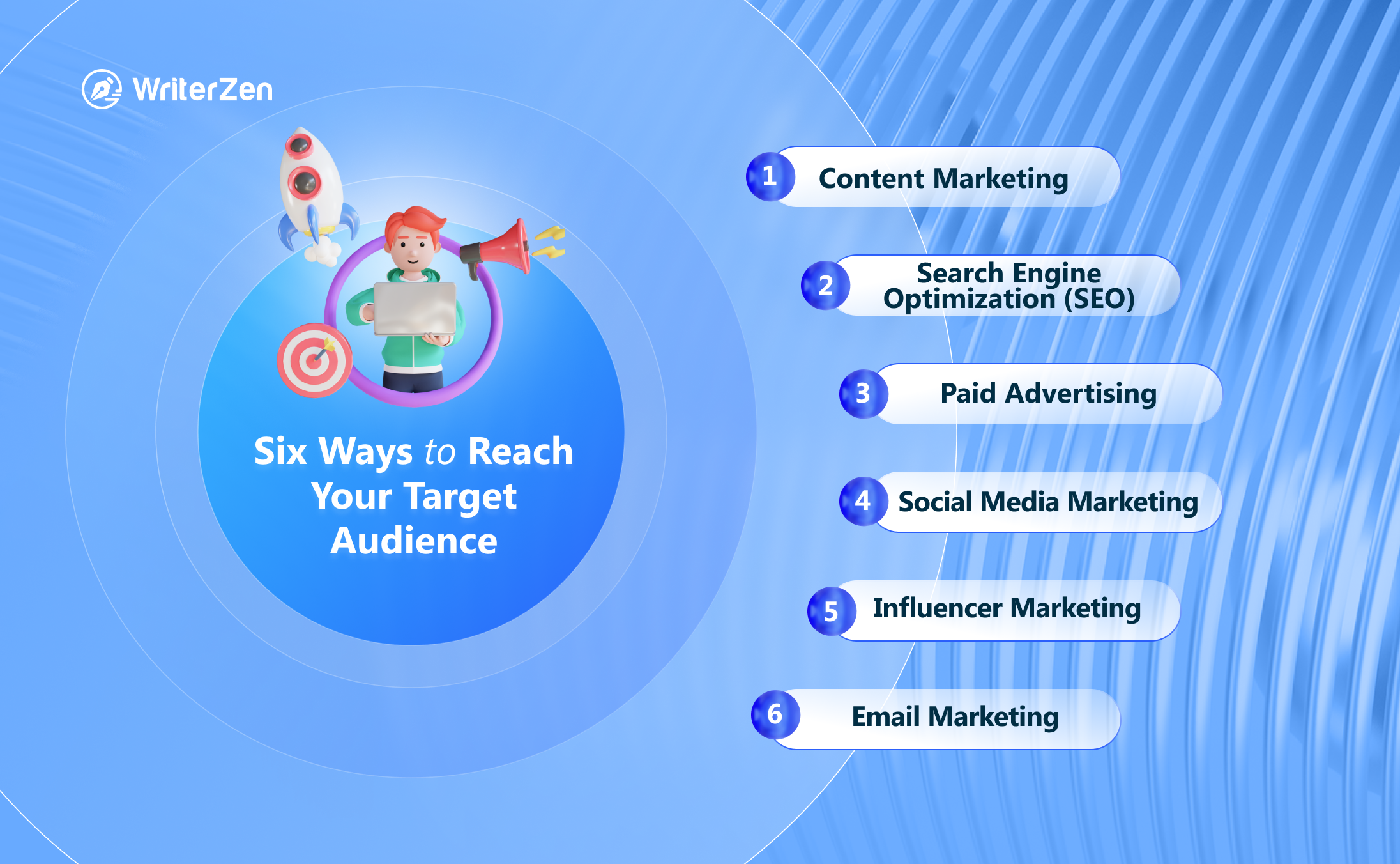
Content Marketing
Develop high-quality, relevant content that addresses your target audience's pain points, interests, and aspirations. Utilize blog posts, videos, podcasts, infographics, and social media content to educate, entertain, and provide value.
Search Engine Optimization (SEO)
Optimize your website and content for search engines to increase visibility among your target audience. Conduct keyword research, create compelling meta tags, and ensure your website is mobile-friendly and user-friendly.
Paid Advertising
Utilize paid advertising platforms like Google Ads, social media ads, and display advertising to target specific demographics, interests, and behaviors. Set clear objectives, craft compelling ad copy, and monitor and optimize your campaigns for maximum impact.
Social Media Marketing
Leverage social media platforms where your target audience is most active. Develop a strong social media presence, engage with your audience through meaningful conversations, and share relevant content consistently.
Influencer Marketing
Collaborate with influencers who have a significant following among your target audience. Their endorsement and authentic content can help build credibility and trust, increasing brand awareness and conversions.
Email Marketing
Build an email list and leverage email marketing campaigns to nurture relationships with your target audience. Provide valuable content, personalized offers, and exclusive promotions to encourage engagement and conversions.
Final Thoughts
Understanding your target audience is the foundation for successful digital marketing. By understanding your target audience's characteristics, behaviors, and preferences, you can tailor your marketing strategies to connect with them.
Whether crafting personalized content, optimizing your website, or leveraging paid advertising, you should be driven by your deep industry knowledge. Embrace the power of targeting, and watch as your digital marketing efforts yield greater engagement, conversions, and business growth.


